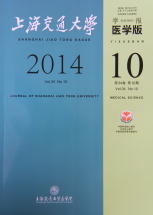Objective To observe variations of the serum retinol-binding protein 4 (RBP4) level of patients with gestational diabetes mellitus (GDM) whose body mass index (BMI) were normal before pregnancy and to analyze the influence factors. Methods A total of 177 patients with GDM who underwent normal antenatal examinations were selected. Their body mass indexes before pregnancy were 16-25 kg/m2. And 354 health pregnant women who underwent antenatal examinations at the same hospital and same period were selected as controls and their age and BMI matched with GDM patients. The 75 g oral glucose tolerance test (OGTT) was conducted in 24-28 gestational weeks. Observed indexes included the body mass increase during 24-28 gestational weeks, RBP4, blood sugar and serum insulin levels form OGTT (0, 30, 60, 120, and 180 min), glycosylated hemoglobin (HbA1C), total cholesterol (TC), triacylglycerol (TG), low density lipoprotein (LDL), high density lipoprotein (HDL), homeostasis model assessment of insulin resistance (HOMA-IR) index, and homeostasis model assessment of β-cell function (HOMA-%B). Results The mean body mass increase of patients with GDM was significantly higher than that of controls and the difference was statistically significant (P<0.05). The plasma glucose and serum insulin levels at each time point of OGTT, HOMA-IR index, HbA1C, and TG level of patients with GDM were significantly higher than those of controls (P<0.001). The differences of TC, HDL, LDL, and HOMA-%B of patients with GDM and controls were not statistically significant (P>0.05). Pearsons correlation analysis showed that the serum RBP4 level of patients with GDM was significantly and positively correlated with the body mass increase during midtrimester, TC, HDL, LDL, fasting plasma glucose (FPG), and HbA1C (P<0.05), and significantly and negatively correlated with HOMA-%B (P<0.05). Results of multiple stepwise regression analysis showed that parameters that were included in the regression equation were FPG, body mass increase during pregnancy, and TC (r2=0.180, P<0.01). Conclusion The serum RBP4 level of GDM women with normal pre-pregnancy body mass increases significantly during mid-trimester. Body mass increase during pregnancy, FPG level, and TC level were positively correlated with the serum RBP4 level.

